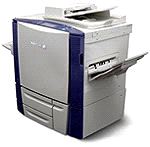Inkjet & Digital Printing
Xerox Drives New Security Standards for Office Printing Products

Tuesday 25. August 2009 - An office copier may seem harmless enough, but today's printing devices are sophisticated systems that are as much at risk of being hacked as networked computers and servers. Each time a document is copied, printed, scanned or faxed, an image is left behind on the system's hard drive. Without proper security measures, confidential information can easily be stolen.
To help ensure security standards are consistent across the printing industry, Xerox Corporation (NYSE: XRX) collaborated with the Institute of Electrical and Electronics Engineers and other hardware vendors to create the Hardcopy Device and System Security Working Group.
The efforts of the Working Group include development of the “2600 Profile,” which outlines a general set of requirements vendors must follow for building secure devices. For example, the profile requires that proper authentication and authorization of users is performed before allowing access, and that the device keeps a security audit log of all activity. It also provides Common Criteria laboratories with a checklist for evaluating printer and MFP security.
Xerox’s ColorQube 9200 Series MFP is currently undergoing certification using the 2600 profile, and is the first product expected to be certified.
“Many manufacturers claim their products are secure, but we take every measure to provide concrete assurance that our products protect data as it’s printed, copied and shared,” said Larry Kovnat, product security manager, Xerox Corporation. “This profile makes it easier for IT departments to identify which products will best meet their security requirements.”
Kovnat offers these tips to keep confidential information safe:
Encourage or require employees to use the secure print feature for confidential documents, which requires a password be entered at the device in order for the print job to be processed.
Look for an MFP that offers encryption so that any data in transit or at rest on the device’s hard disk will be protected.
Select a vendor that assures complete separation of the fax telephone line and the network connection. Unprotected fax connections in multifunction devices can be an open back door into the network.
Look for an Image Overwrite security option, which electronically “shreds” information stored on the hard disk(s) of devices as part of routine job processing. The electronic erasing can be performed automatically when each print job is completed, or reset manually as needed.
